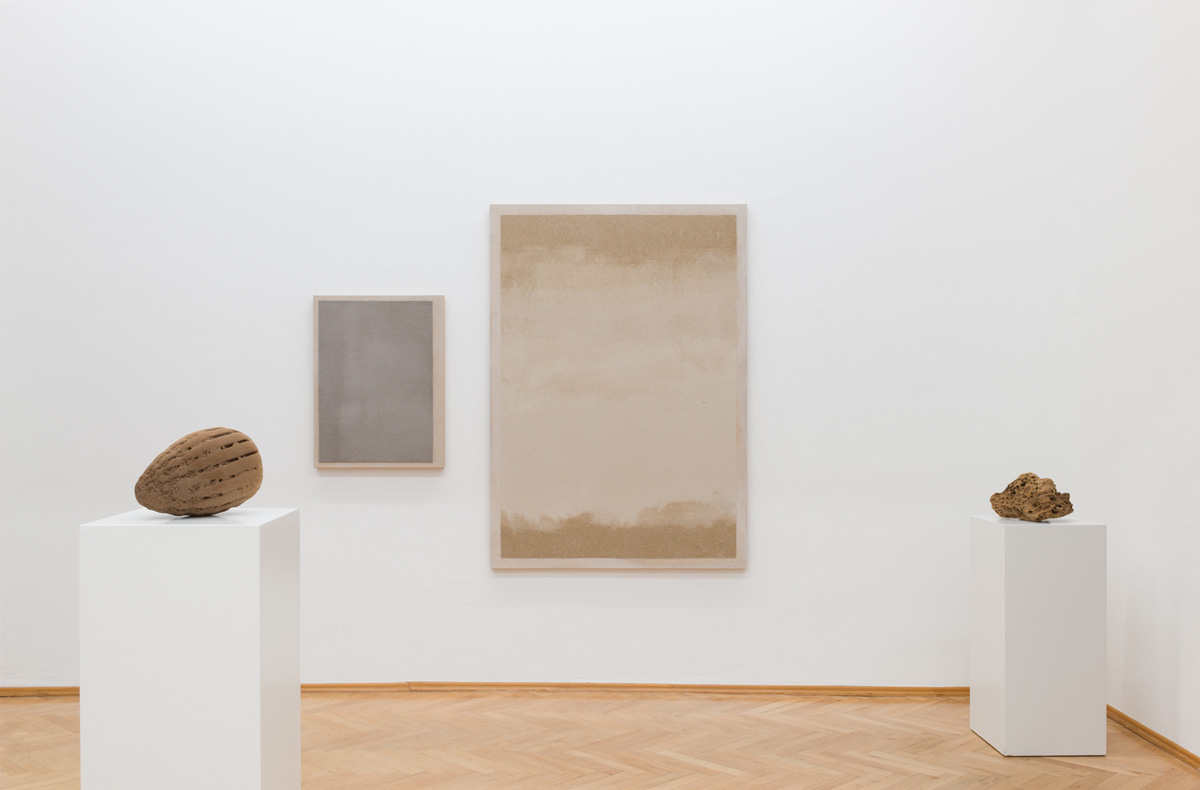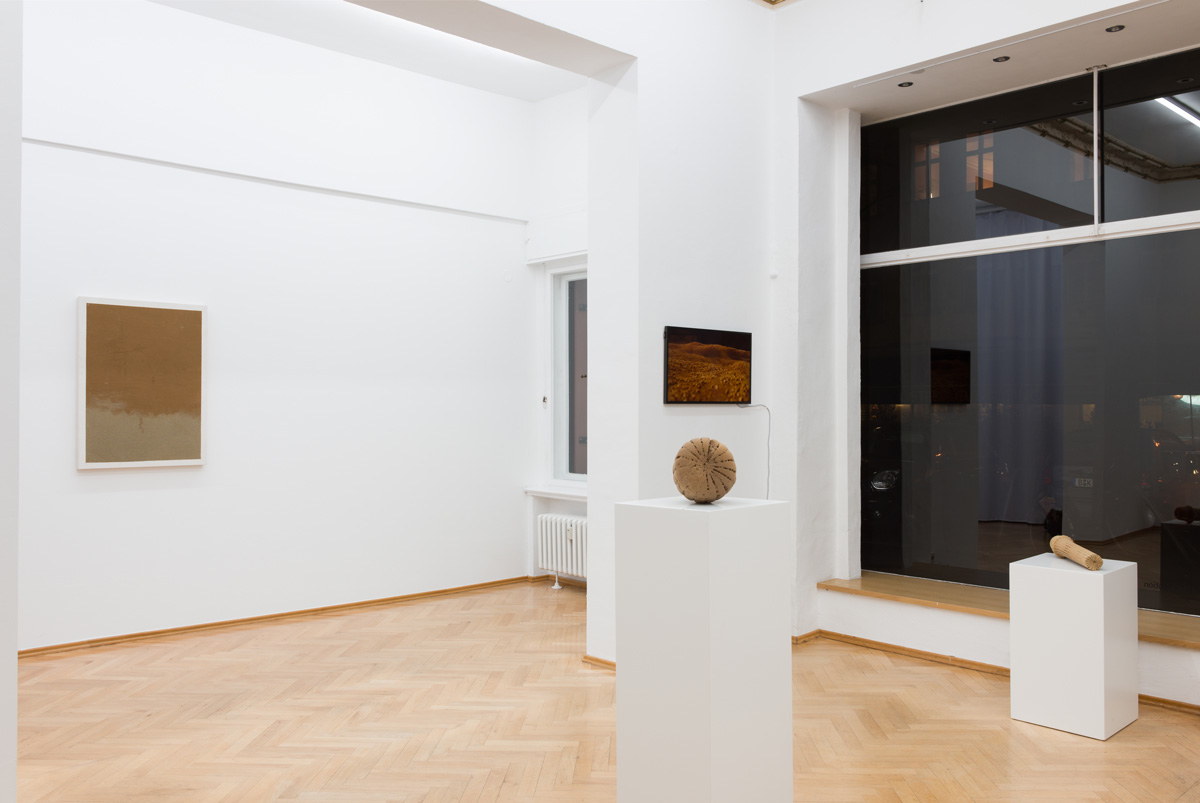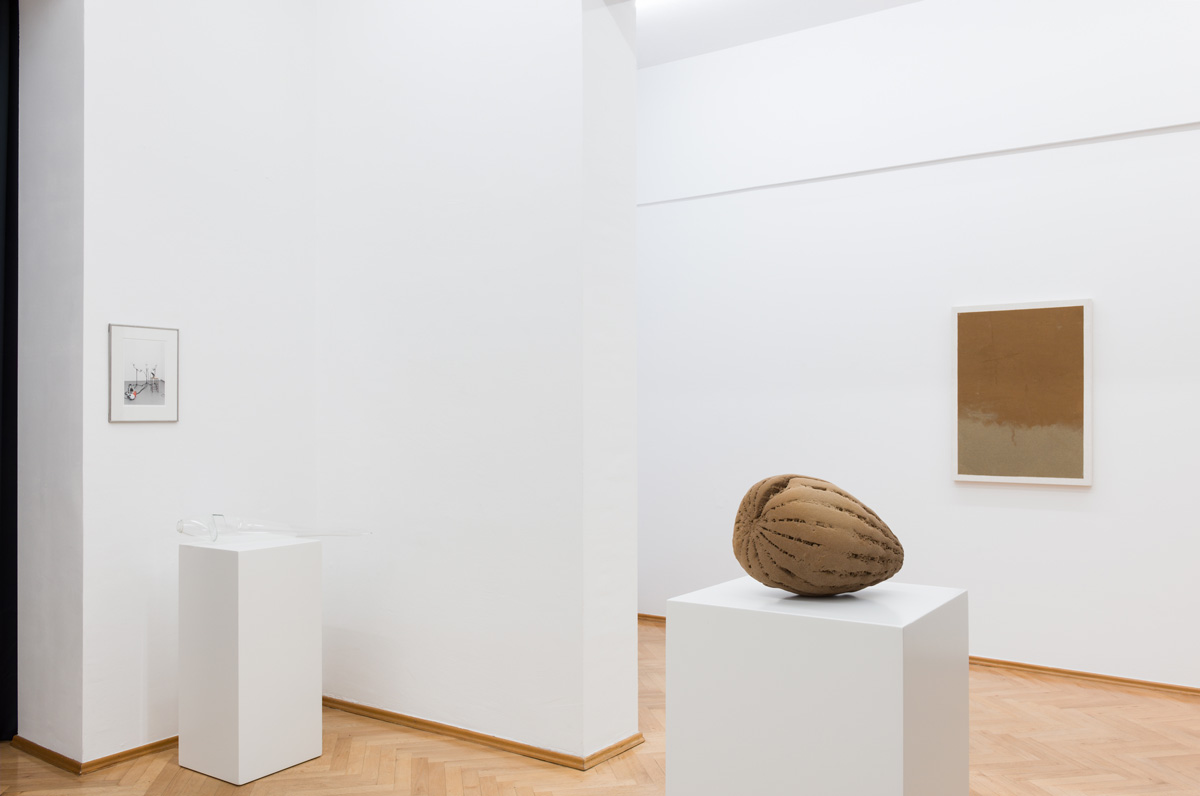



(english version below)
Sand – Fragments – Motion
Jeewi Lee zeigt Bilder und Skulpturen aus Sand, welche die Form vergrößerter Sandkörner haben, Katja Aufleger ein Video aus Filmsequenzen mit Sand in der Hauptrolle, außerdem die Fotografie einer Soundinstallation, deren Klang inspiriert ist vom Geräusch einer singenden Düne in Katar, und darunter auf dem Sockel den Prototyp einer Glaspfeife für diese Installation, hergestellt aus jenem Dünensand.
Sand ist eine wichtige Ressource. Mit Sand wird Beton oder Glas hergestellt, ohne Sand keine Straßen und keine Städte. Sand wird zur Produktion von elektronischen Bauteilen gebraucht, ohne Sand keine Photovoltaik und keine künstliche Intelligenz. Sand ist aber auch ein Trinkwasserspeicher und Lebensraum für Tiere und Pflanzen. Fünfzig Milliarden Tonnen werden jedes Jahr abgebaut, das entspricht dem Gewicht von vierzig Milliarden Autos. Hierdurch werden ganze Landschaften zerstört.
Sand besteht aus Körnern abgelagerten Gesteins. Diese werden zum Meer geschwemmt, wie winzige Skulpturen geschliffen und geformt. Manche Sandkörner haben tausende Kilometer hinter sich und Milliarden Jahre, bevor der Mensch für kurze Zeit seinen Abdruck im Sand hinterlässt. Deshalb trägt jedes Korn Spuren und Erinnerungen in und mit sich – embodied memories.
Sand – Fragments – Motion
Jeewi Lee’s paintings and sculptures are made of sand which take the form of enlarged grains, while Katja Aufleger’s video of film sequences feature sand as protagonist. Her photograph shows a sound installation whose sound is inspired by a singing dune in Qatar. Below it, the prototype of a glass pipe from the installation is blown from the sand of this same dune.
Sand is an important resource. Sand is used to make concrete or glass, without sand there would be no roads or cities. Sand is needed for the production of electronic components, without sand there would be no photovoltaics and no artificial intelligence. But it is also a reservoir for drinking water and a habitat for animals and plants. Fifty billion tons are mined every year, which is equivalent to the weight of forty billion cars. This destroys entire landscapes.
Sand consists of grains of deposited rock. These are washed out to sea, polished and shaped like tiny sculptures. Some grains of sand have traveled thousands of kilometers and billions of years before we leave our footprint in the sand for a short time. That is why every grain carries traces and memories in and with it – embodied memories.

